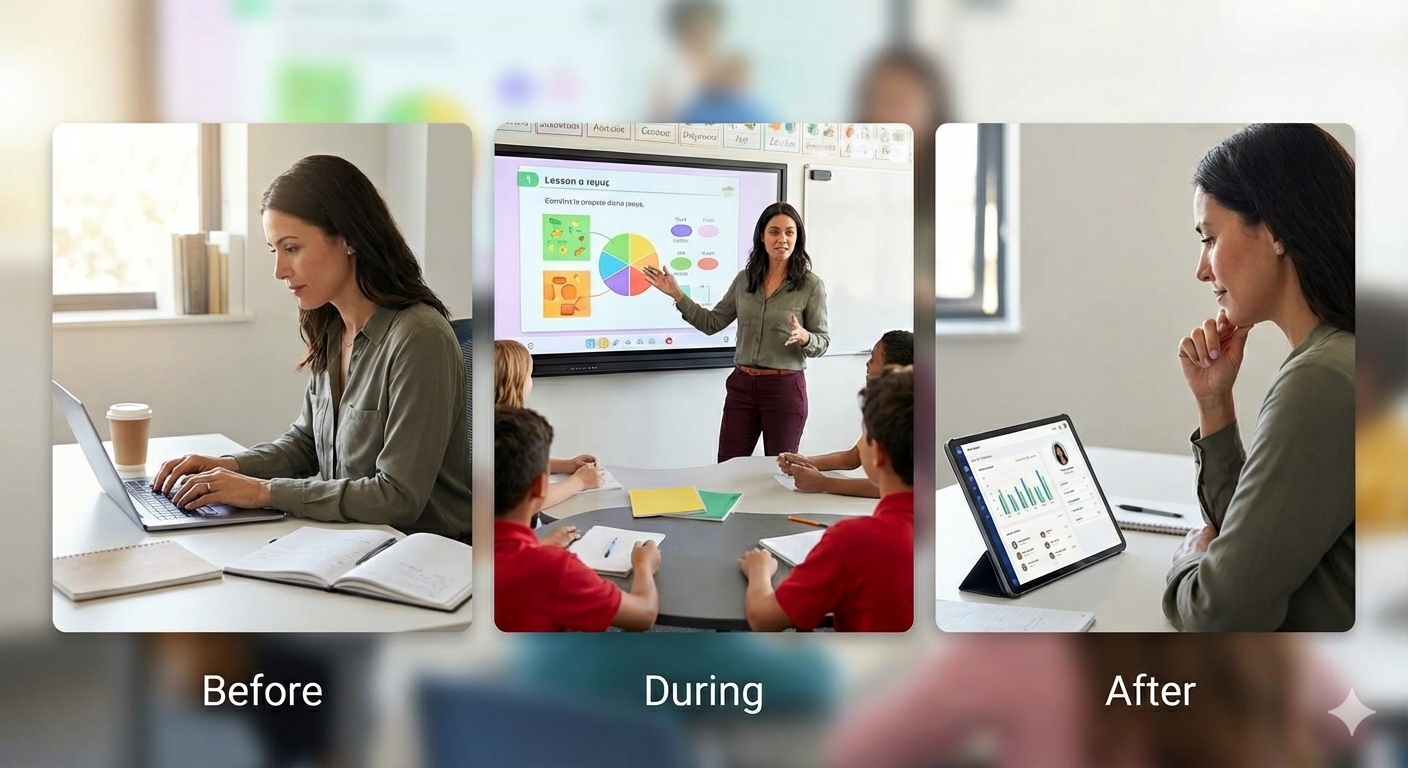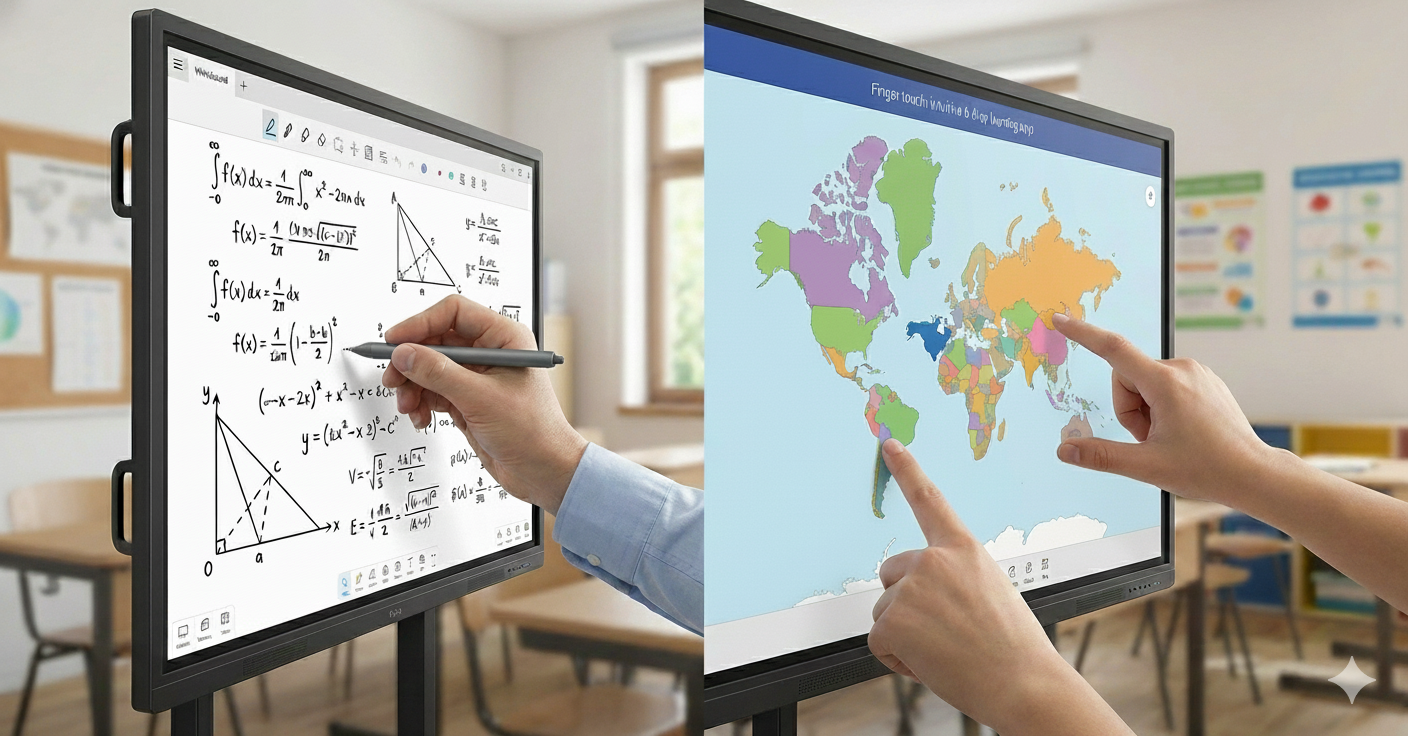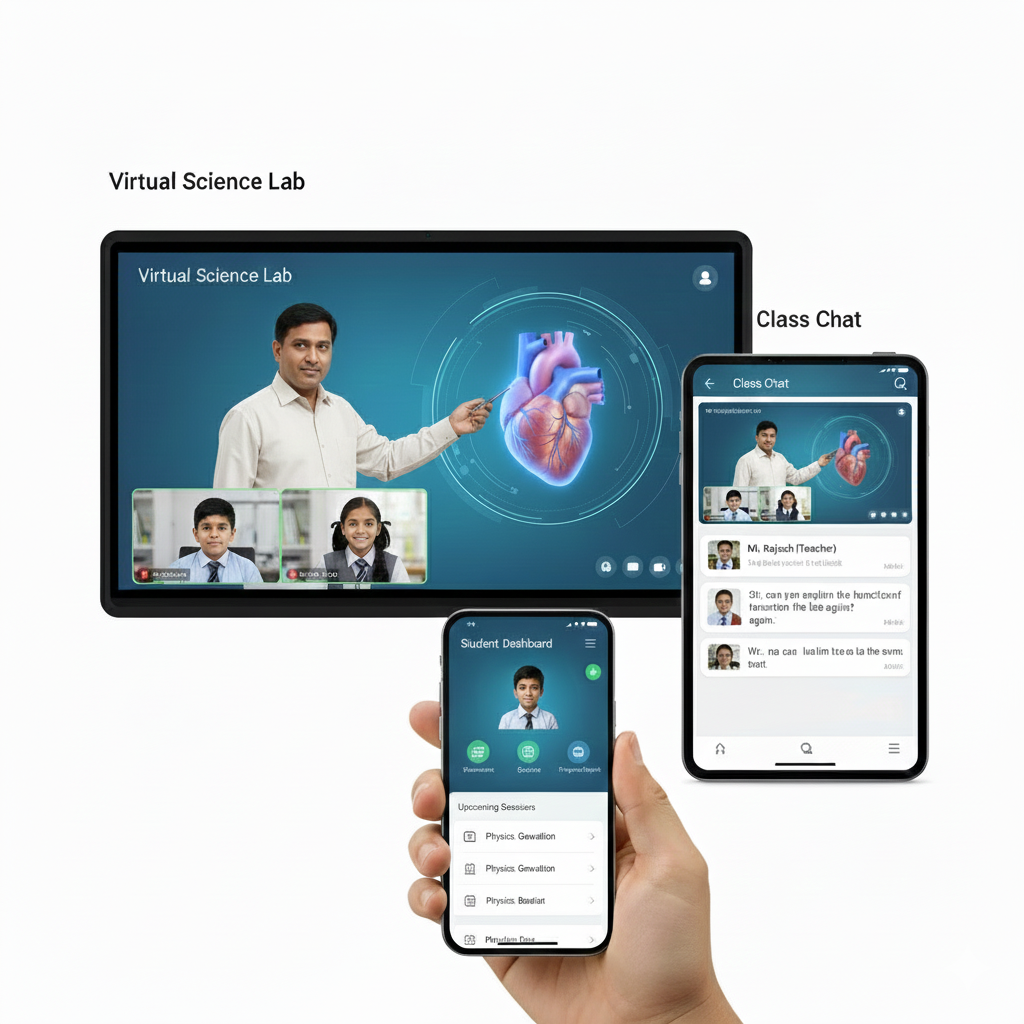What Is a Smart Classroom? All You Need to Know

Ever find yourself trying to get a classroom full of students to pay attention, only to have their minds wander off into the abyss of doodles, daydreams, and desk graffiti? You’re not alone. Traditional teaching methods are increasingly failing to engage today’s learners. That's where a smart classroom powered by interactive learning technology can truly save the day.
In India, interest in digital classrooms is rapidly growing, and for good reason. According to a report by the Ministry of Education, over 200,000 schools across India have adopted smart classrooms, and the number is growing every year. So, what is a smart classroom, and why is it gaining significant attention? In this guide, we unpack the essential features, benefits, and real-world impact, helping educators make informed decisions.

What Is a Smart Classroom?
A smart classroom, also known as a digital classroom, is a modern learning environment. It’s transforming the way education is delivered and experienced. Instead of dusty chalkboards, you have sleek interactive panels. Instead of monotonous lectures, you have engaging multimedia presentations. And instead of bored students, you have excited, engaged learners. That’s the essence of a smart classroom.
Digital classrooms are equipped with technology like projectors, tablets, high-speed internet connections, and interactive digital boards for teaching. These tools transform a regular classroom into a dynamic, interactive learning environment. They allow teachers to create immersive lesson plans that cater to the needs of every student, making learning more personalized, engaging, and fun.
Why India Needs Digital Classrooms?
India has one of the world’s biggest student communities. With over 250 million students enrolled in schools, we have a massive opportunity (and responsibility) to improve our educational system. Yet, a significant challenge remains—keeping students engaged.
That’s where smart classroom solutions for schools in India can make a big difference. By embracing technology, schools and colleges can close learning gaps and empower teachers to do what they do best—teach.
The Key Features of a Smart Classroom
A smart classroom isn't just about swapping blackboards for whiteboards. It’s about creating an entirely new learning experience. Let’s look at some of the defining features of a robust digital classroom setup:
1. Interactive Intelligence Panels
Gone are the days of chalk dust and smudged notes. Today, interactive intelligence panels allow teachers to write, erase, and even draw with a touch. These panels can display high-definition images, videos, and even 3D models, making subjects like biology and geography way more exciting. Plus, you can save all your notes directly to the cloud—no more erasing the board after every class!
2. Internet Connectivity
A stable, high-speed internet connection is essential for an effective digital classroom. With a robust connection, teachers can stream educational videos, conduct virtual field trips, and even collaborate with classrooms around the globe. The internet transforms your classroom into a global hub of information and interactivity.
Roombr takes it a step further. Our AI-powered devices come with built-in SIM card slots, ensuring always-on connectivity for digital classroom setups in rural and urban areas.
3. Digital Grading Systems
Grading doesn’t need to be a paper-heavy task anymore. Digital classroom equipment helps automate assessments, assignments, and feedback. With just a few clicks, you can assess quizzes, assignments, and exams, giving you more time to focus on teaching rather than paperwork. And the best part? It’s eco-friendly—less paper, more trees!
Elements of a Digital Classroom Setup

Let’s break down the essential components of an effective digital classroom setup for schools and colleges:
1. Interactive Whiteboards and Projectors
Interactive whiteboards are the cornerstone of any smart classroom. Paired with a high-quality projector, these boards allow you to display everything from PowerPoint presentations to YouTube videos. They’re also perfect for interactive lessons where students can come up to the board and engage directly with the material.
2. Tablets and Laptops
In a smart class in school, tablets and laptops replace the traditional notebooks and textbooks. Students can access a world of information at their fingertips, participate in interactive lessons, and complete assignments online. Plus, teachers can monitor progress in real-time, ensuring no student gets left behind.
3. Audio-Visual Enhancements
Smart classrooms come equipped with top-notch audio-visual systems, including surround sound speakers and HD displays. Whether it’s showing a documentary or playing an educational game, the experience is immersive, making learning much more engaging and effective.
Smart Classroom vs. The Traditional Classroom

The differences between a smart and a traditional classroom are night and day. With smart class education, you’re not just teaching. You’re engaging, inspiring, and preparing students for a tech-savvy world.
Traditional classrooms rely on static instruction, while digital classrooms foster engagement through interactive technology, multimedia content, and real-time feedback. The shift is about transforming teaching into a two-way experience.
Improved academic performance, increased student engagement, and streamlined teacher workloads are some of the greatest benefits of smart classrooms in India.
To understand the key differences in detail, check out our comparative guide on modern digital classrooms vs. traditional classrooms.
Let’s Wrap Up!
As education continues to evolve, smart classrooms are leading the way, turning traditional lecture halls into vibrant, tech-savvy learning spaces. Digital classrooms aren’t a distant vision—they’re already reshaping education today. From interactive panels to digital grading systems, the benefits are endless, making education more engaging, efficient, and fun.
If you're exploring how to upgrade to smart class technology, the first step is understanding its core benefits. With Roombr, transforming any wall into a dynamic, tech-enabled learning environment is not only possible but seamless and impactful for students and teachers.
FAQs
1. What is a smart classroom, and how is it different from a traditional classroom?
A smart classroom is a modern learning environment equipped with technology like interactive whiteboards, projectors, and high-speed internet. Unlike traditional classrooms, digital classrooms offer multimedia-rich lessons, digital grading, and cloud-based lesson plans, making learning more engaging and efficient.
2: What are the main features of a smart classroom?
The main features of a smart classroom include interactive panels, high-speed internet connectivity, digital grading systems, and audio-visual equipment. These elements work together to create an immersive and interactive learning experience.
3: How do digital classrooms benefit teachers?
Digital classrooms reduce the workload on teachers by automating tasks like grading and lesson planning. They also provide tools to make lessons more engaging, helping to capture and maintain students' attention. Plus, with everything stored digitally, teachers can easily access and reuse materials, saving time and effort.
Aneesh Kumar
Share
Step Into the future of
Education with Roombr


















